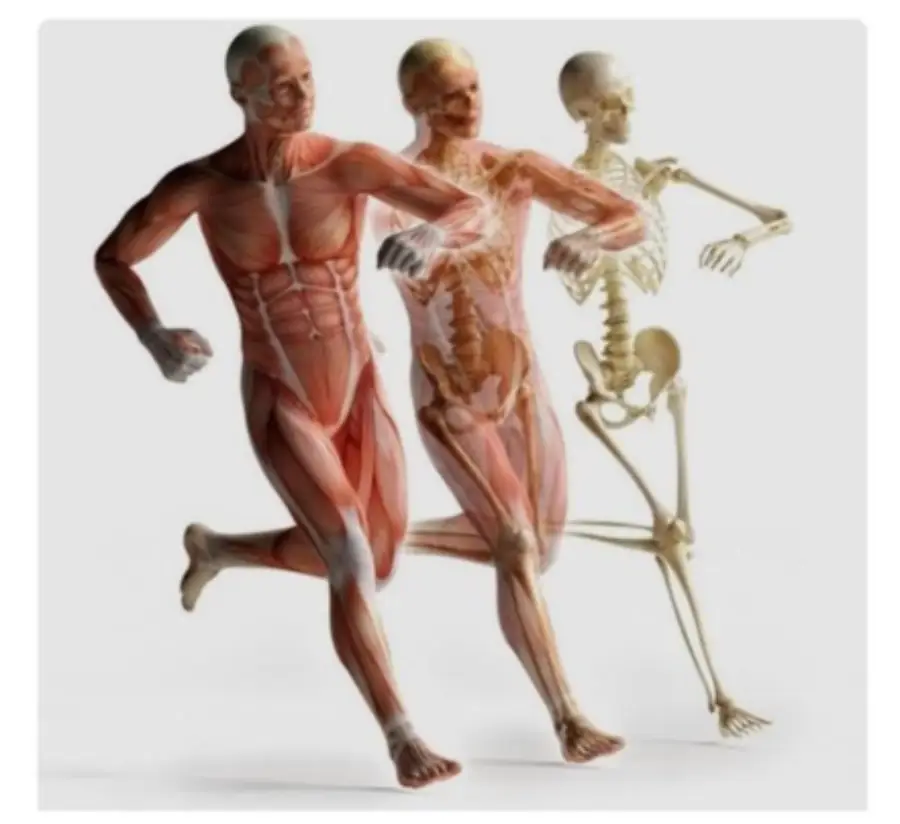Review of Physics Principles Applied to Kinesiology

Review of Physics Principles Applied to Kinesiology
Kinesiology, the study of human movement, is deeply connected with physics, particularly the laws that govern motion and forces. Understanding the fundamental principles of physics allows us to explain how the body moves and responds to different forces, which is especially useful in activities like calisthenics. This article will explore essential concepts such as gravity, center of mass, external and internal forces, inertia, acceleration, and Newton’s laws of motion, focusing on their applications in human movement.
1. Gravity
Gravity is the force that pulls objects toward the center of the Earth. In the context of human movement, gravity plays a crucial role in balance and stability. Whether you’re standing, walking, or performing calisthenics exercises like handstands or push-ups, gravity influences how you move and maintain posture. In exercises that require lifting the body against gravity, like pull-ups or dips, muscles must generate enough force to overcome gravitational pull. The understanding of gravity allows athletes to optimize their body positioning to maintain stability and conserve energy.
2. Weight and Center of Mass
Weight is the force exerted by gravity on an object. In human biomechanics, weight distribution and the center of mass (the point where the body’s weight is balanced in all directions) are critical for maintaining balance and performing movements efficiently. In calisthenics, movements like the planche or L-sit require precise control over the body’s center of mass. For instance, in a handstand, keeping the center of mass aligned over the base of support (the hands) is crucial for stability. By controlling the center of mass, athletes can maximize their efficiency and prevent unnecessary strain on muscles and joints.
3. External Forces
External forces refer to any force that acts on the body from the environment, such as gravity, friction, air resistance, or applied forces from surfaces like the ground. These forces influence movement, and understanding them is vital for athletes to modify techniques, particularly in calisthenics where control of the body relative to external forces is essential. For example, the friction between hands and the surface during exercises like muscle-ups provides the necessary grip to generate force, allowing the body to move upward. Athletes can take advantage of or counteract these forces to improve their performance.
4. Newton’s First Law of Motion (Law of Inertia)
Newton’s First Law, also known as the law of inertia, states that an object at rest stays at rest, and an object in motion stays in motion unless acted upon by an external force. Inertia is directly proportional to mass, meaning that heavier bodies resist changes in their state of motion more than lighter bodies. In the human body, inertia explains why starting or stopping a movement requires more effort than maintaining a steady pace. During exercises like jumping or sprinting, the body must overcome inertia to move quickly. In calisthenics, transitions between movements, such as from a pull-up to a muscle-up, require overcoming inertia to maintain fluidity.
5. Newton’s Second Law of Motion (Law of Acceleration)
Newton’s Second Law states that the force applied to an object is equal to the mass of the object multiplied by its acceleration (F = ma). This means that heavier objects require more force to accelerate. In kinesiology, this principle helps explain how muscles produce the force needed for acceleration during movements. In calisthenics, this law is evident when performing explosive movements like box jumps or clap push-ups. The force generated by the muscles must be sufficient to propel the body upward. The greater the acceleration needed, the more force the muscles must produce.
6. Newton’s Third Law of Motion (Action-Reaction)
Newton’s Third Law explains that for every action, there is an equal and opposite reaction. This means that when you apply a force to an object, the object applies an equal force back on you. In kinesiology, this law is crucial in understanding how the body interacts with the environment. For example, when performing a push-up, the force exerted by your hands on the ground is met with an equal and opposite reaction force from the ground, which lifts your body upward. This principle is fundamental in exercises that require pushing or pulling movements.
7. Internal Forces
Internal forces are forces generated within the body, primarily by muscles and bones, to counteract external forces or initiate movement. These forces allow the body to move and maintain posture. In calisthenics, the ability to generate and control internal forces is key to performing complex movements. For instance, in exercises like the planche, internal forces generated by the shoulders, core, and arms work together to maintain a stable position against gravity and external forces.
Conclusion
The laws of physics are deeply embedded in human movement, and understanding them is crucial for improving performance and preventing injury in calisthenics. By applying principles like gravity, center of mass, and Newton’s laws, athletes can refine their techniques, optimize energy use, and perform exercises with greater precision. This foundational knowledge of physics provides the tools to understand and master the mechanics of movement.
References
- Halliday, D., Resnick, R., & Walker, J. (2014). Fundamentals of Physics. John Wiley & Sons.
- Hamill, J., Knutzen, K. M., & Derrick, T. R. (2015). Biomechanical Basis of Human Movement. Wolters Kluwer Health.
- McGinnis, P. M. (2013). Biomechanics of Sport and Exercise. Human Kinetics.
🎓 Want to become a certified instructor?
This lesson is part of our FREE Kinesiology course. Create a free account to track your progress and earn your certificate!